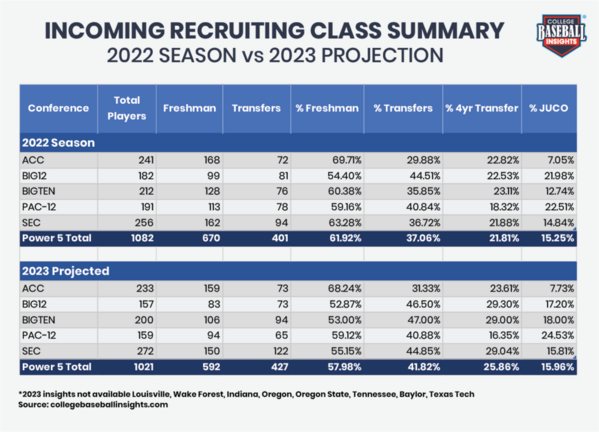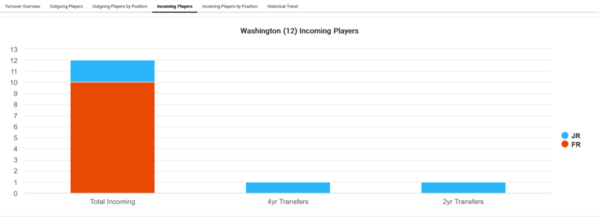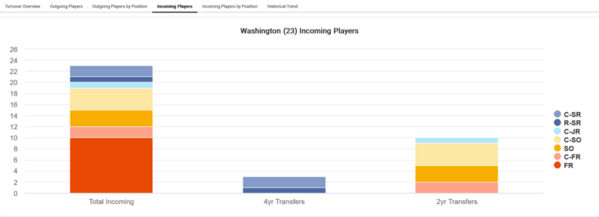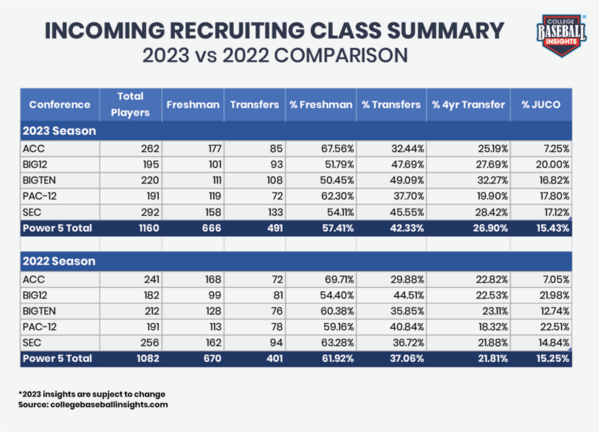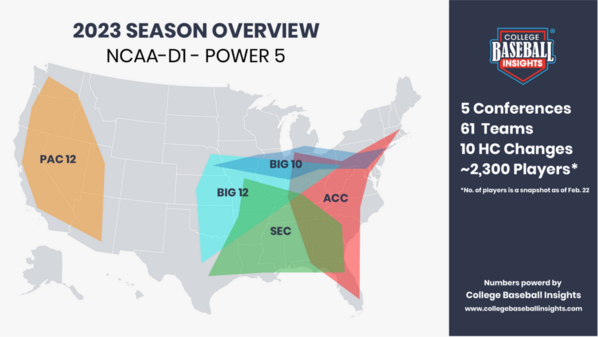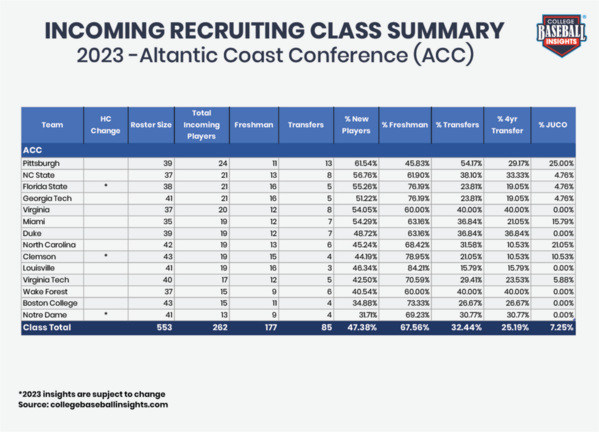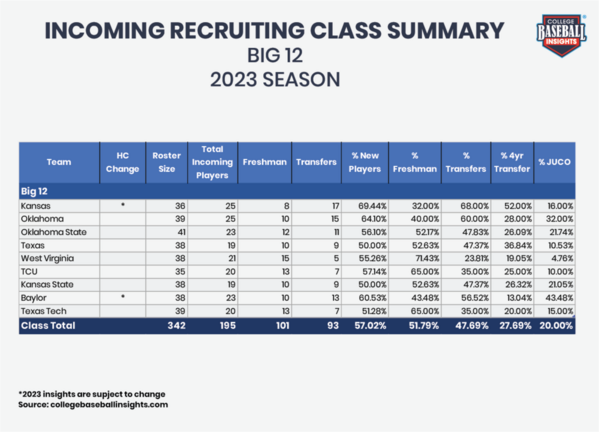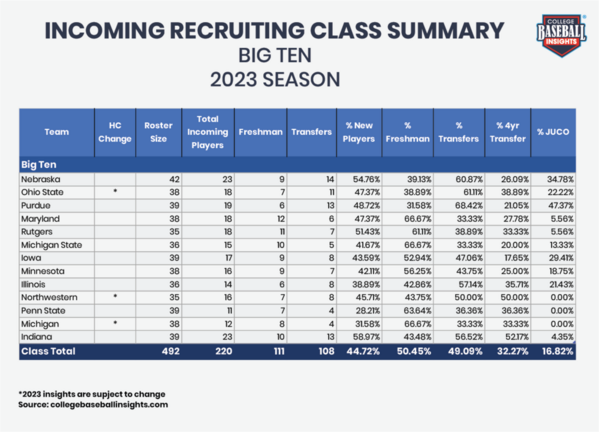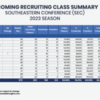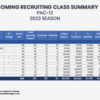With all the discussion pertaining to changes in recruiting landscape (transfer portal, NIL, head coaching changes, etc) , over the last 2 weeks we did an internal project to understand the incoming recruiting class.
Here is a 1st glance of our findings.
Total Players is total number of new players on that season's roster
Freshman - we've tagged true freshman vs covid or redshirt freshman
Transfers -we've reconciled players that have transferred into new school
Feedback appreciate.

